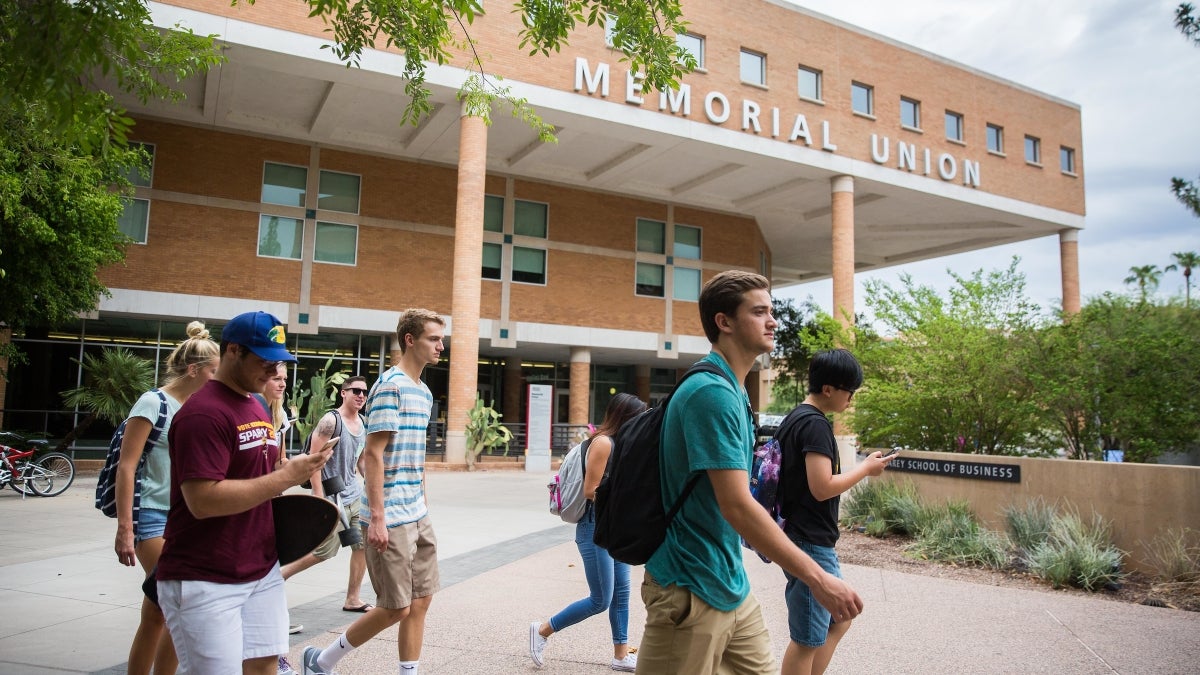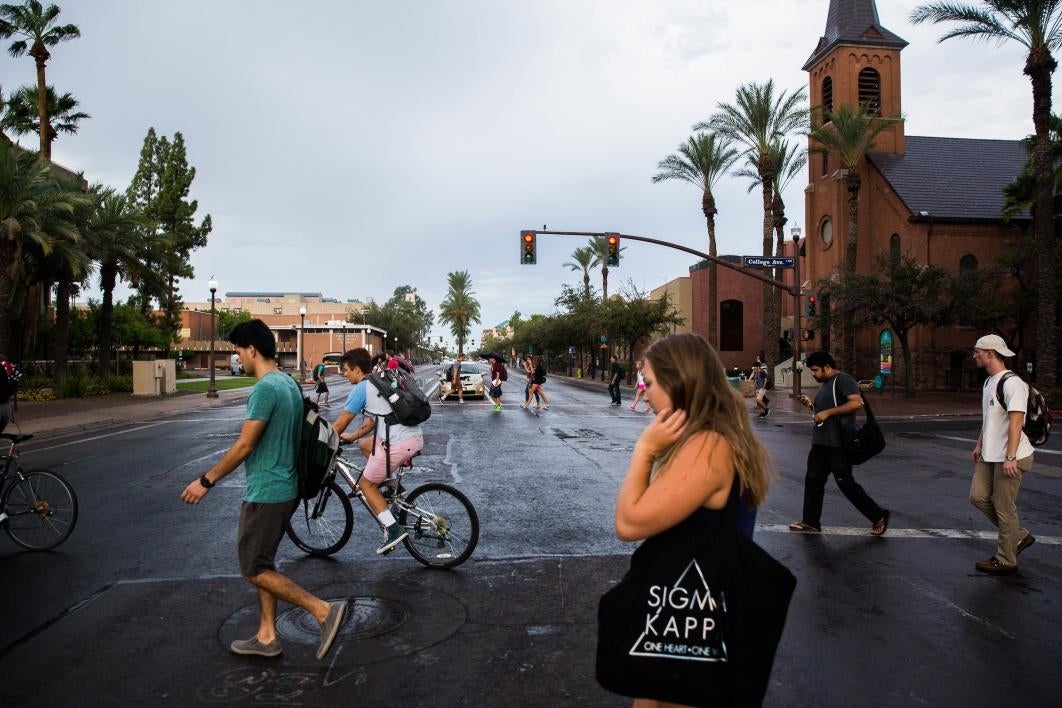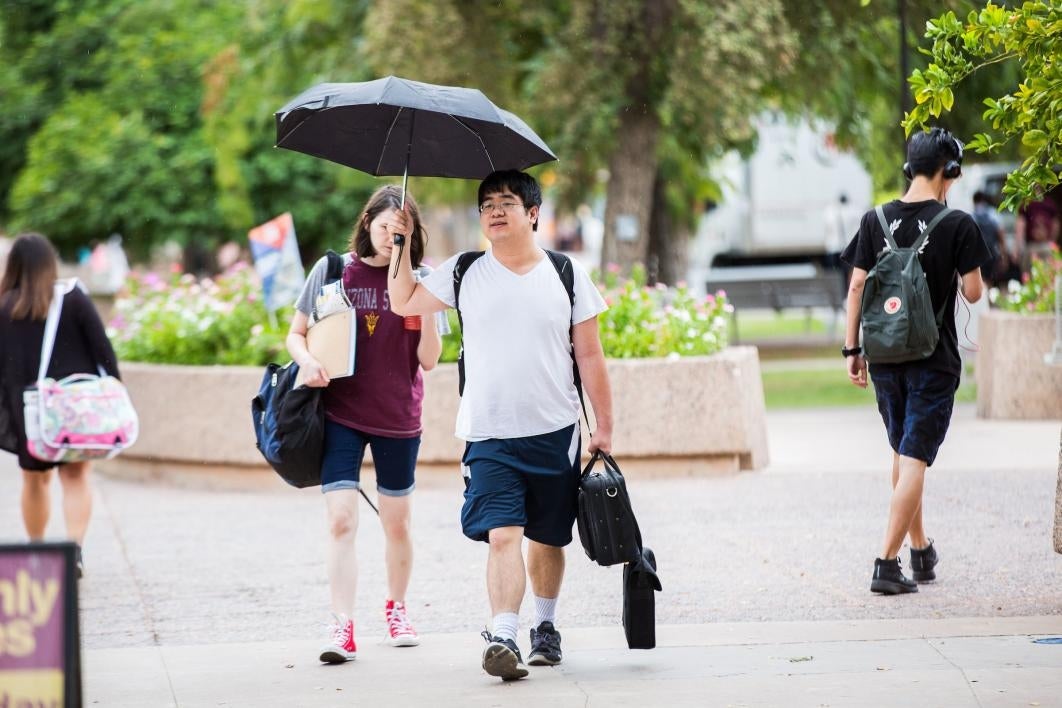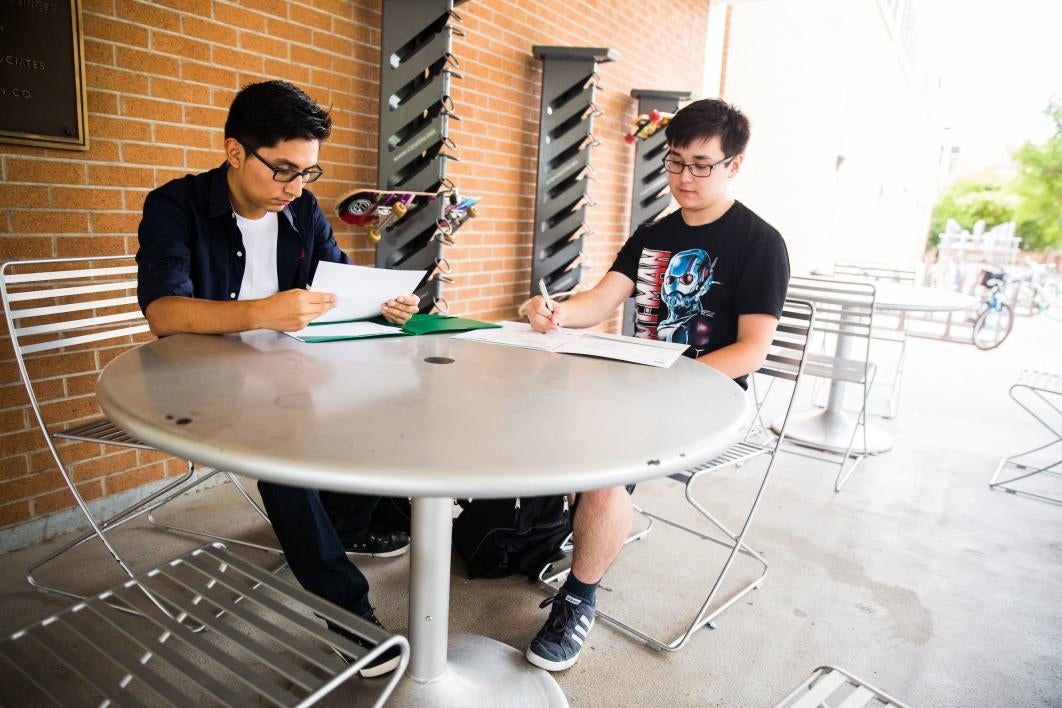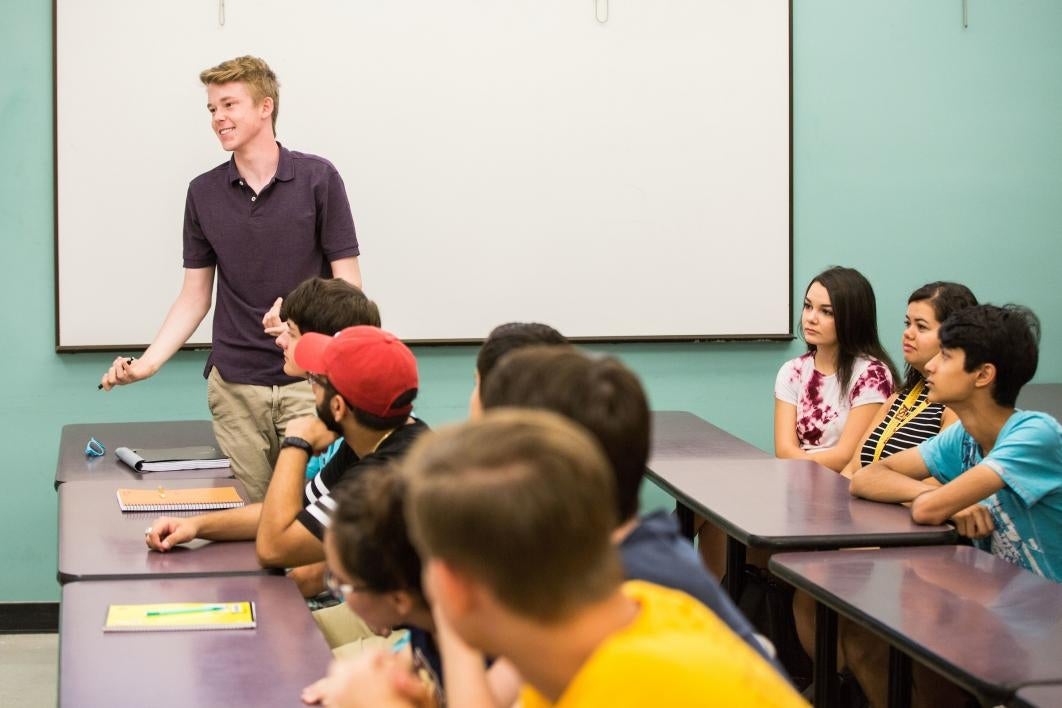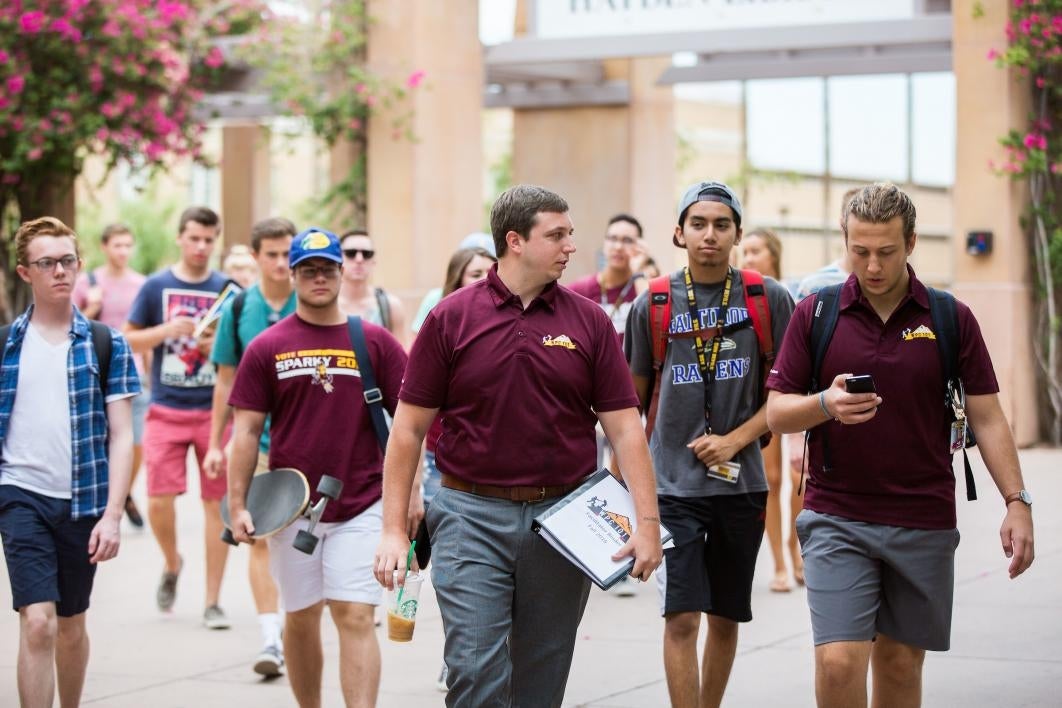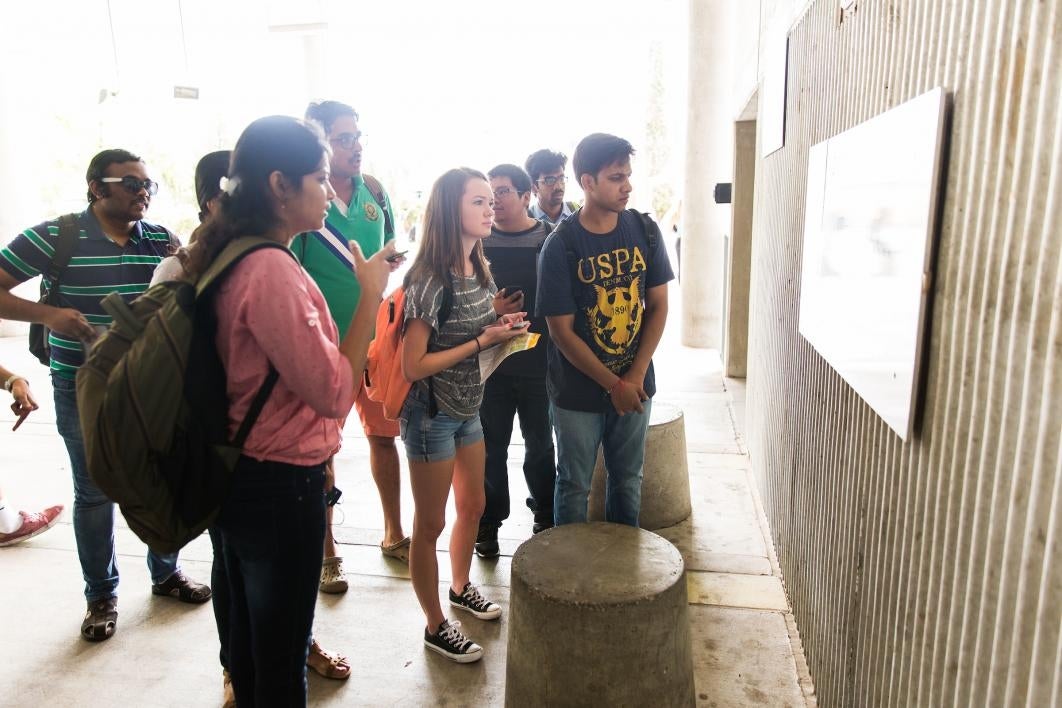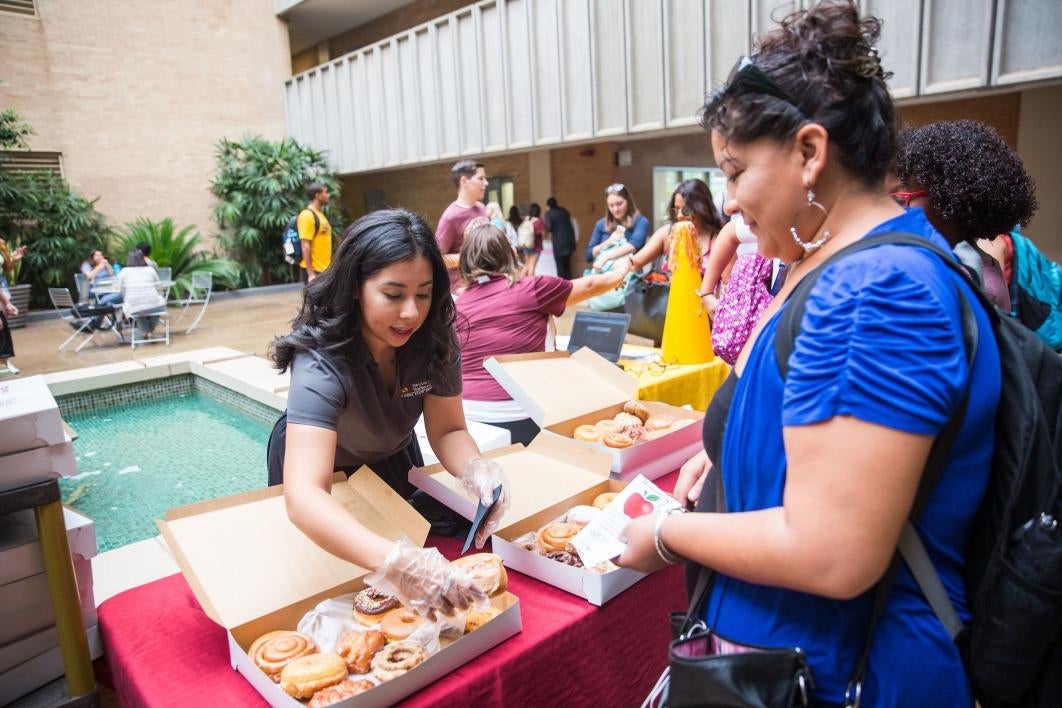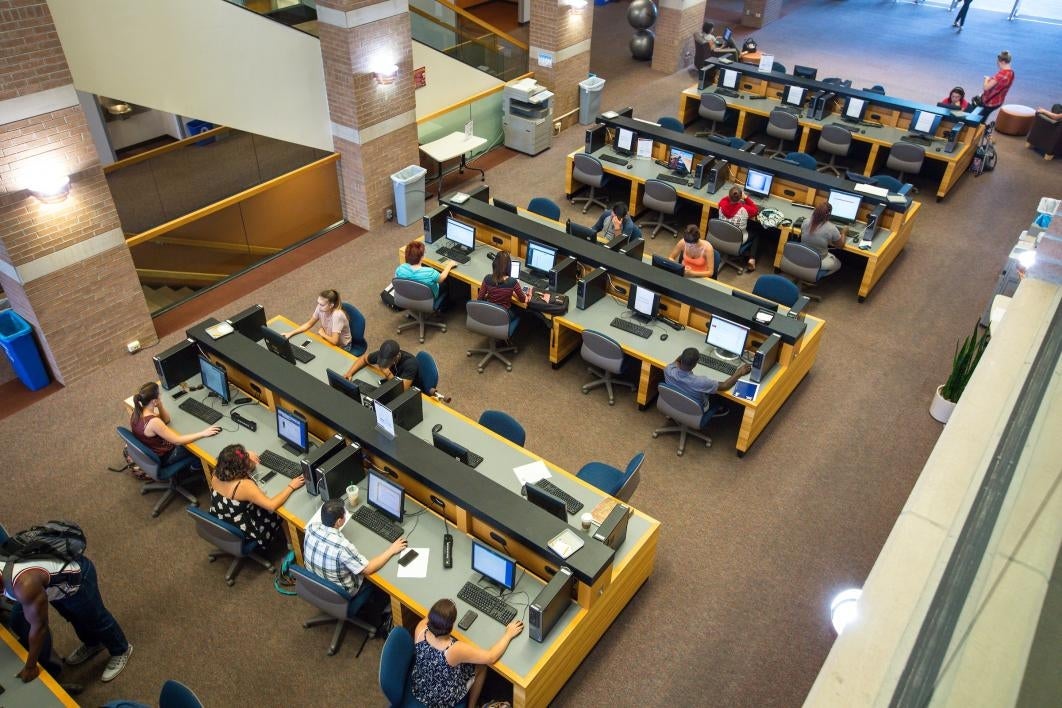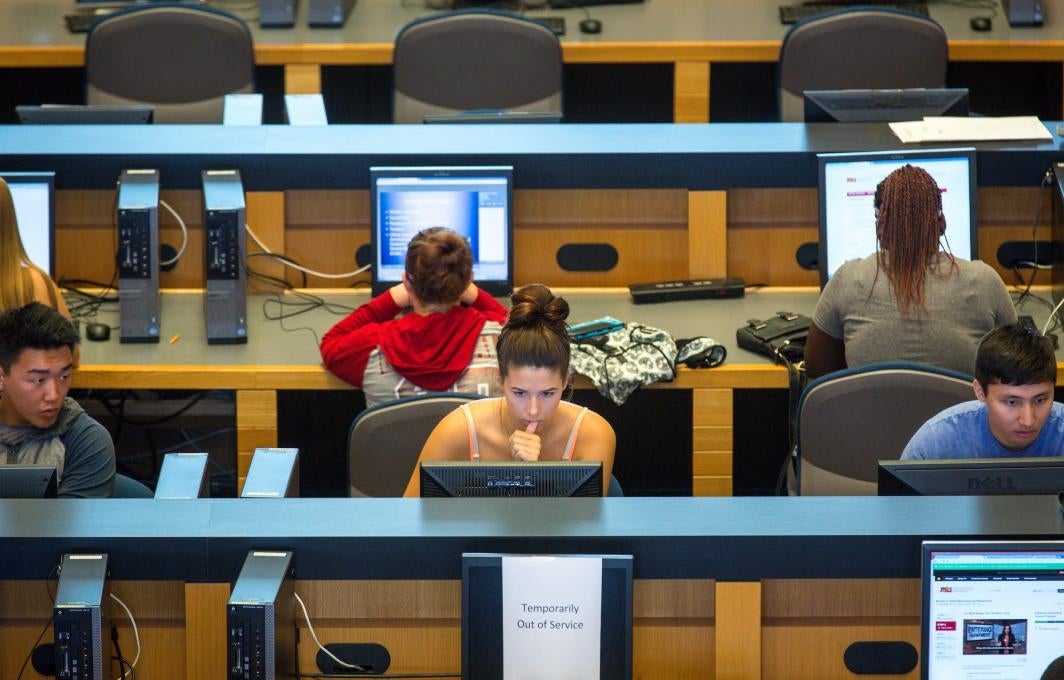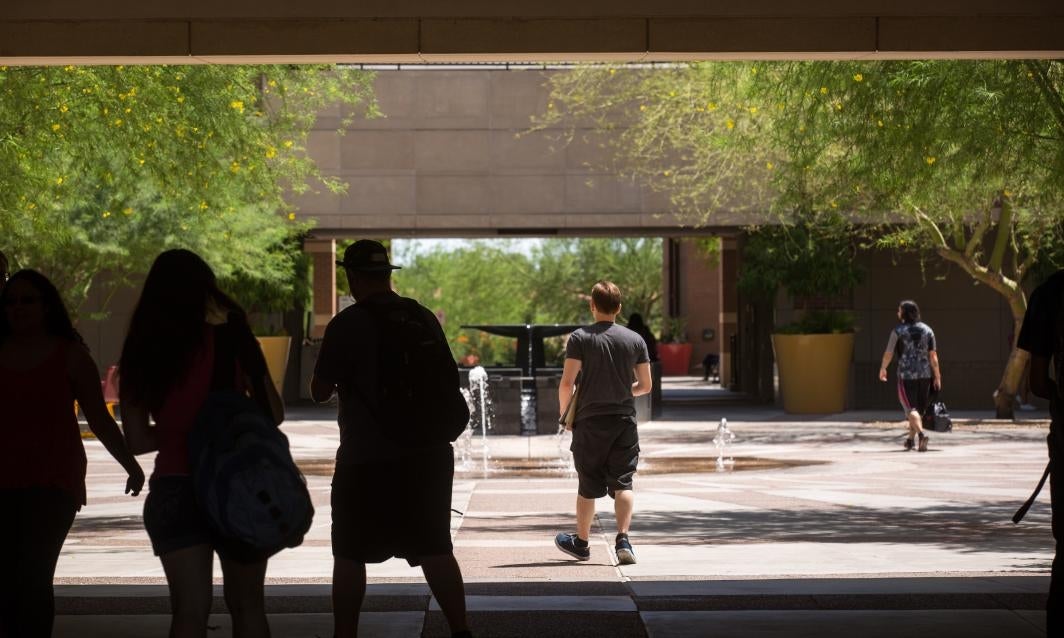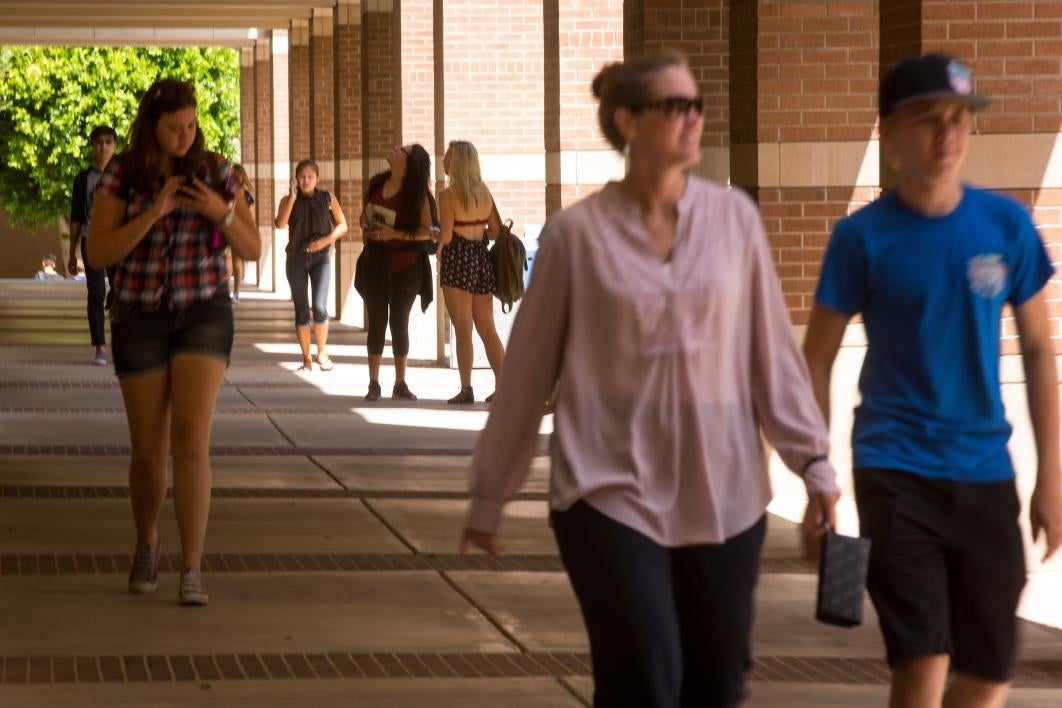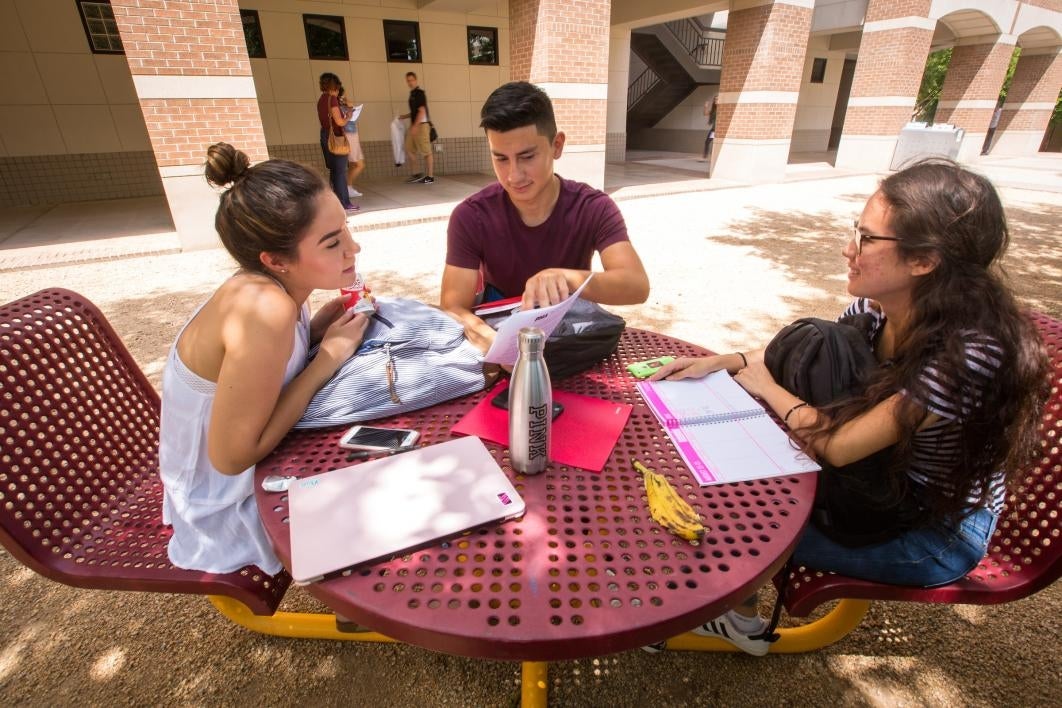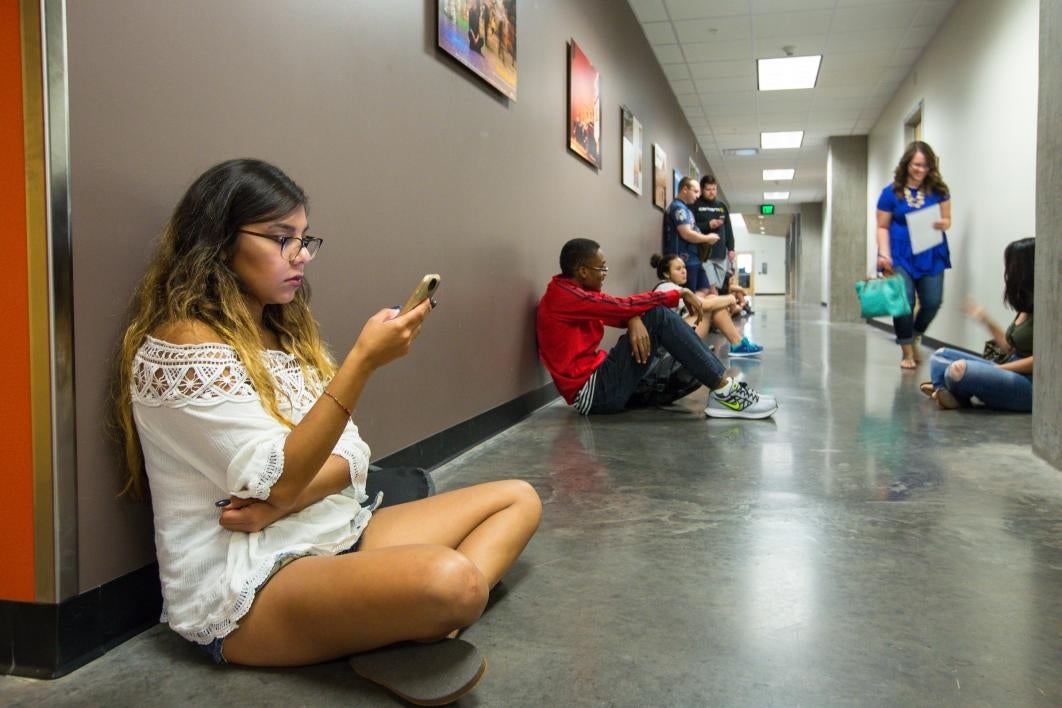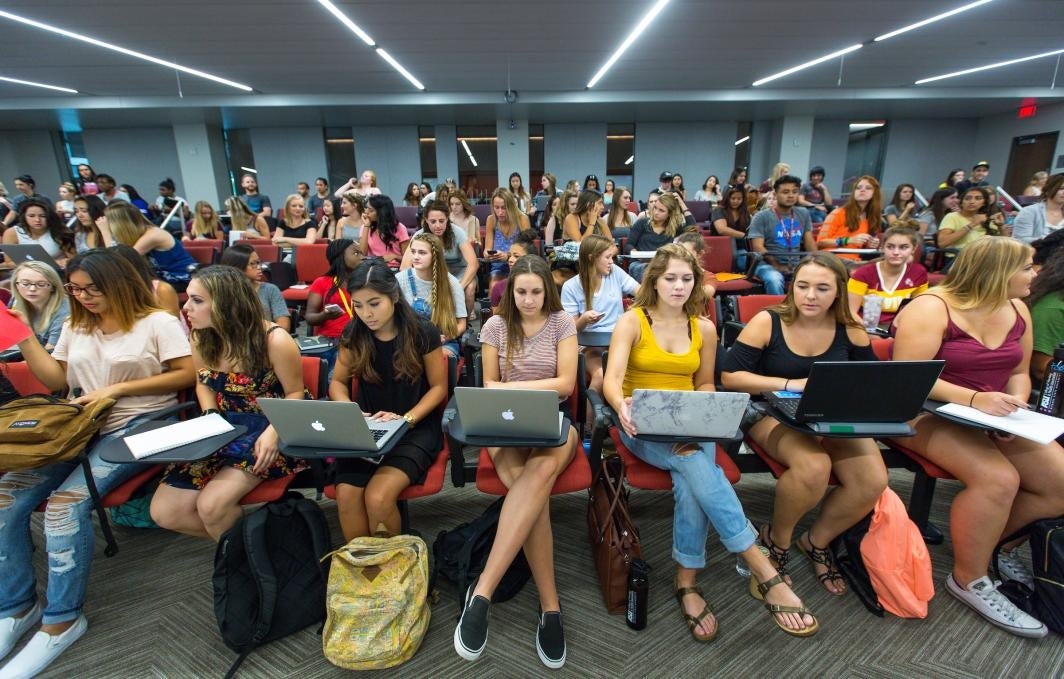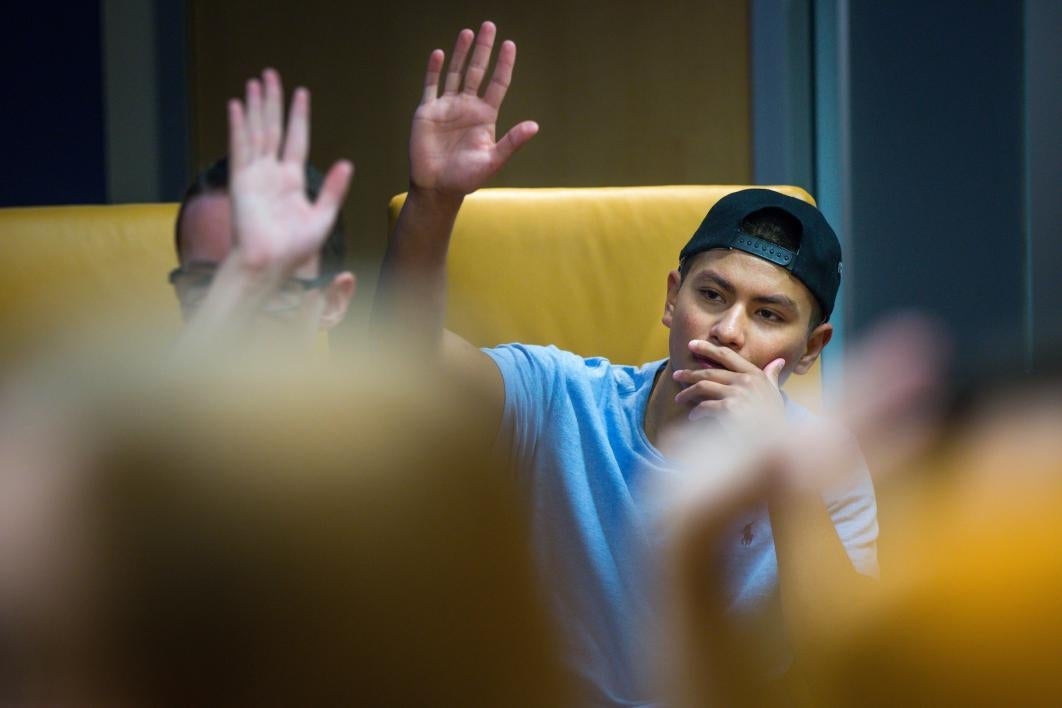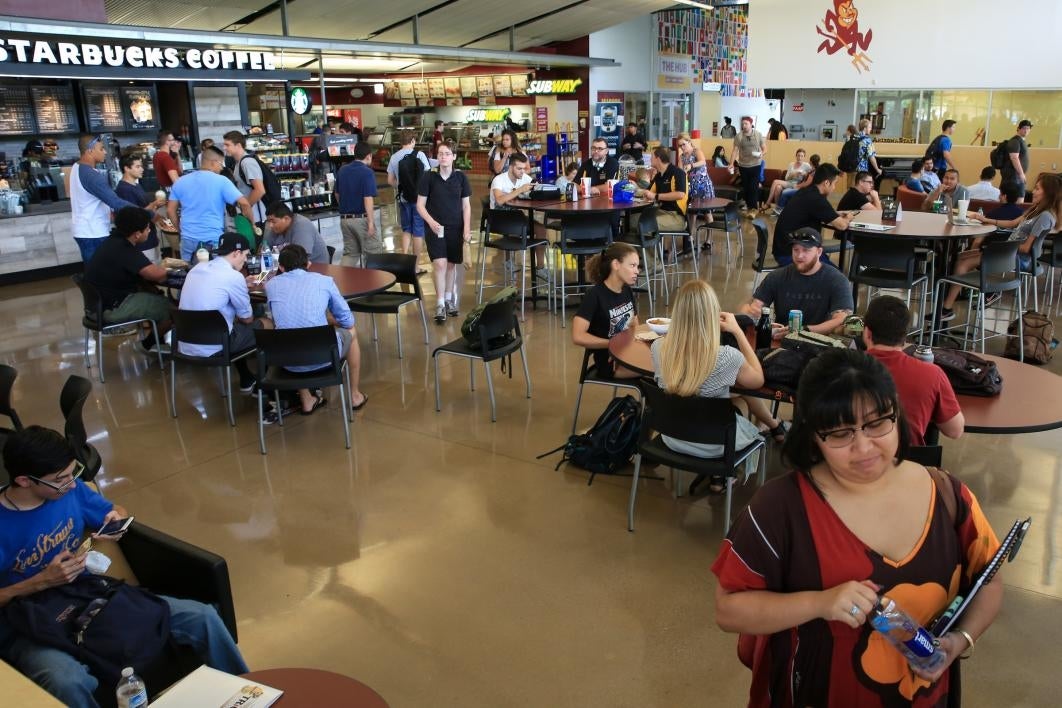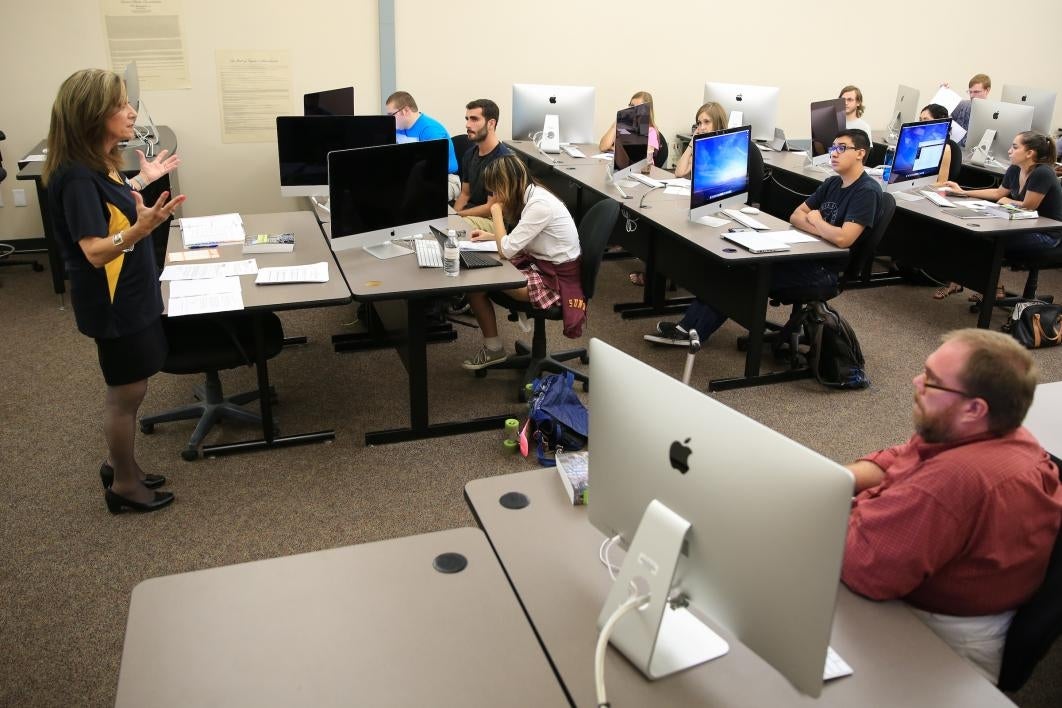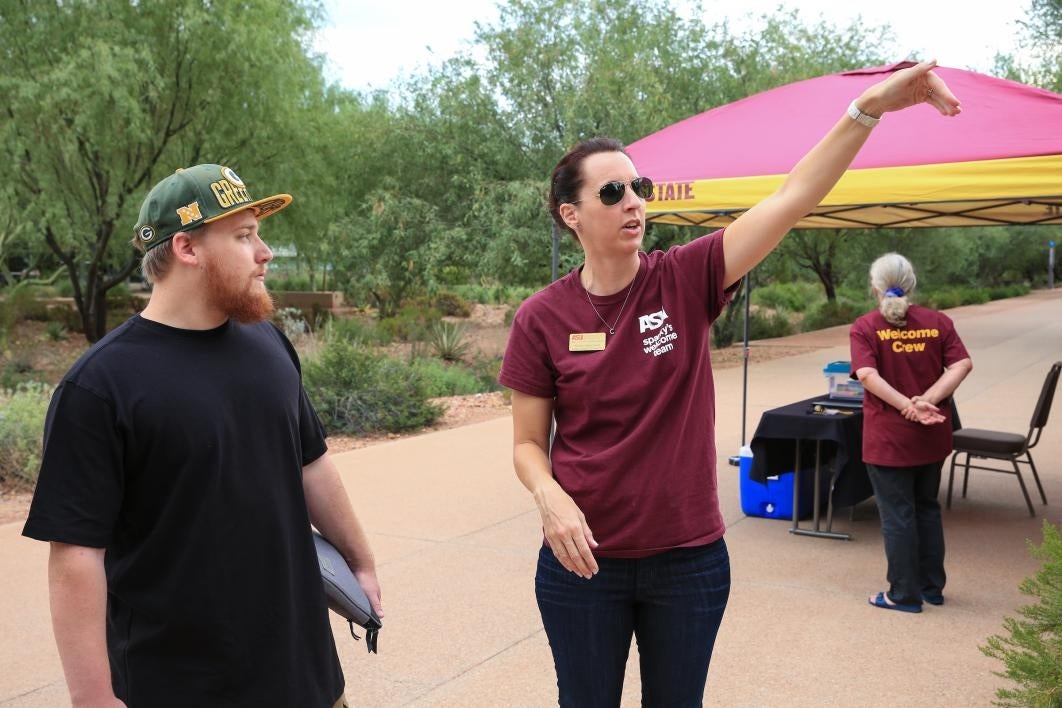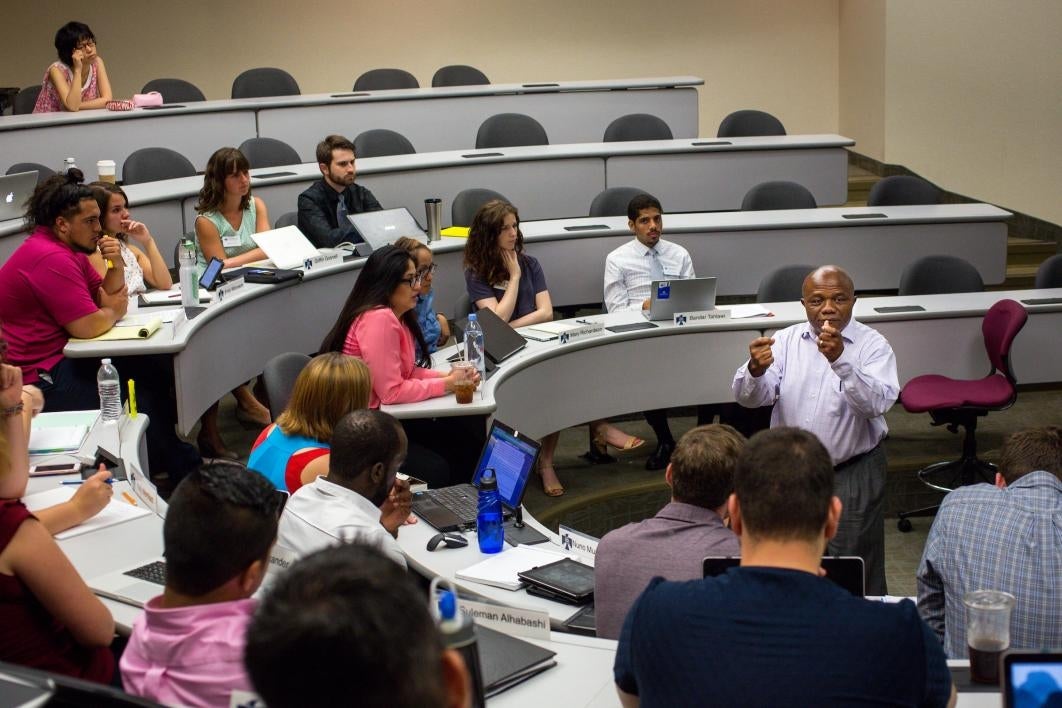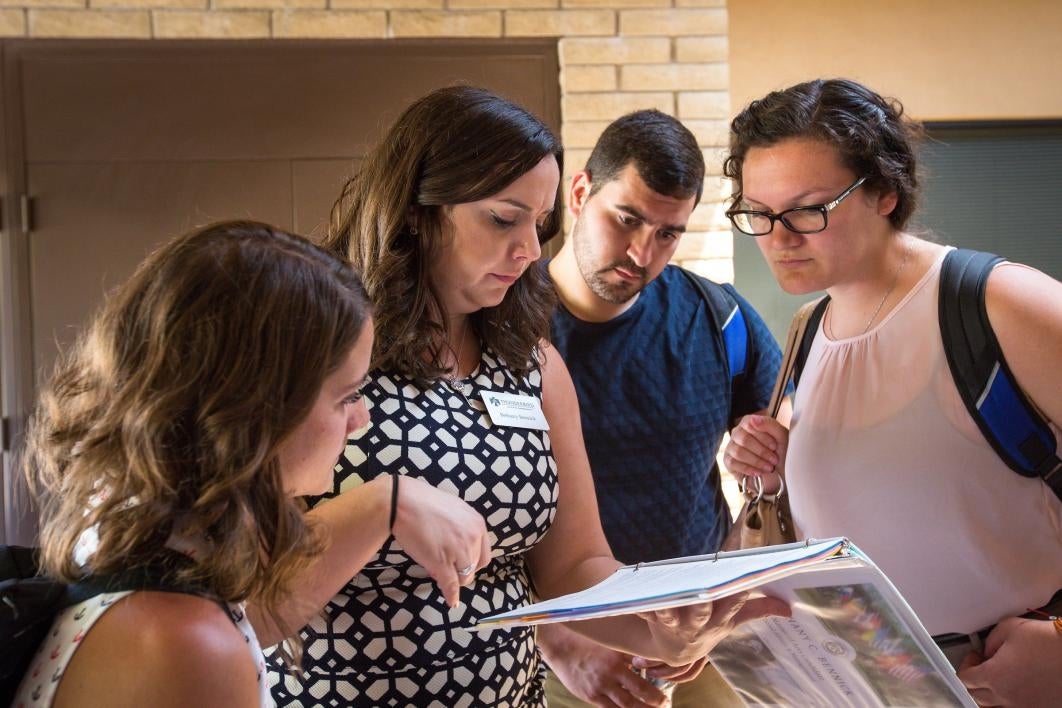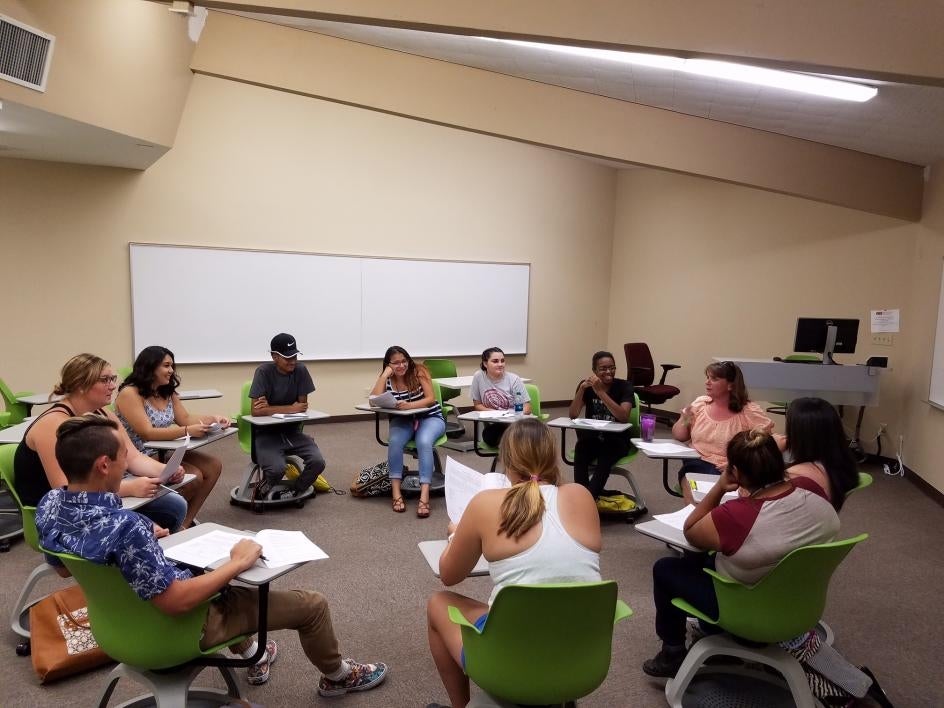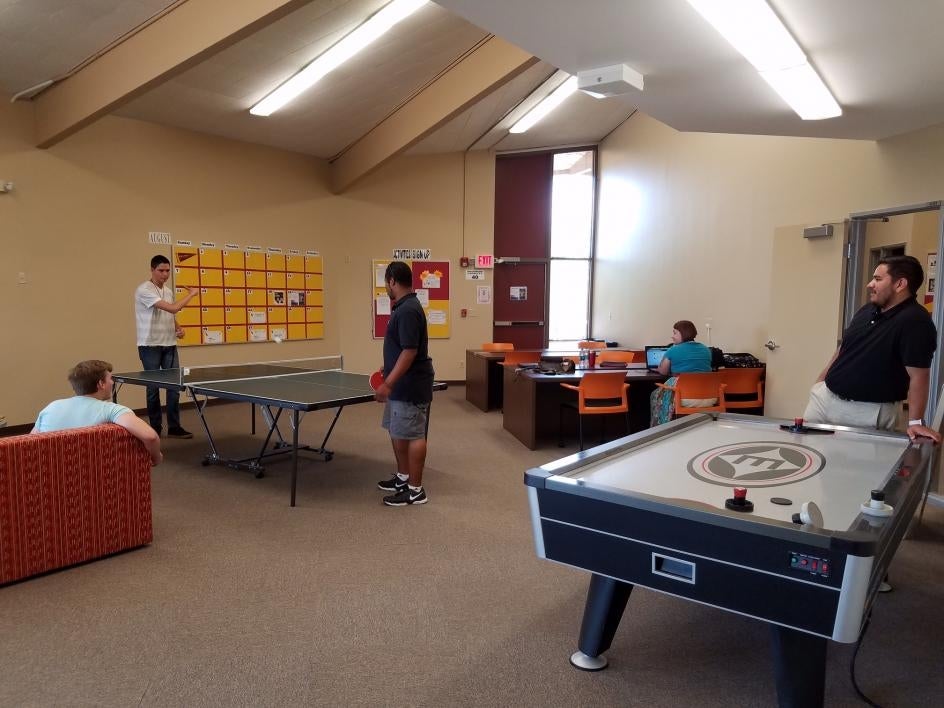The first day of the 2016-2017 school year got off to a smooth start at Arizona State University. It was easygoing in Tempe, streamlined at West, bucolic at Polytechnic and compartmentalized at the Downtown Phoenix campus. At ASU’s Lake Havasu City location, meanwhile, students counted bats.
In all, ASU absorbed thousands of people — from first-year students to returning faculty — without much fuss.
The newbies of the Class of 2020 represent a group that’s already making history: Of the 11,500 freshmen joining the university, nearly 7,000 are from Arizona, the largest in-state class in school history. The record number of Arizona enrollments reflects the university’s commitment to serving families across the state, ASU officials said in a statement.
Also, nearly half of the Arizona-based first-years come from underrepresented populations, marking the most diverse freshman class in ASU history. It highlights the historic dedication of research universities to educate a diverse student body, the university said.
The new students are spreading out across ASU’s various campuses: about 9,000 in Tempe, 1,500 on the Downtown Phoenix campus, about 1,000 between Polytechnic and West, and nearly three dozen at Lake Havasu City.
Here’s the story of the first day from each campus:
Tempe campus: First-years, first thing in the morning
It was 82 minutes after sunrise on Thursday as several freshmen scurried to their first college classes at Arizona State University’s Tempe campus.
And if a 7:30 a.m. start time wasn’t enough of a challenge for the first day, it was gloomy and gray outside the Durham Language and Literature Building.
“Today of all days to rain,” lamented Ernesto Vargas of Peoria, a graphic design major. “I wouldn’t say I’m thrilled with the early time, but it’s nothing different from high school. It’s OK for a few classes but not all of them.”
His friend, Nathan Herr, a film major who lives in Peoria, had been up for hours in order to make it to his 7:30 a.m. class on ASU’s largest campus, home of the Palm Walk, The Memorial Union and Sun Devil stadium.
“I got up at like 4:30 and drove to the West campus and took the bus from there to here,” he said. “I have to do that every Tuesday and Thursday for a math class.”
Also sleep-deprived was Alexa Mayer of Nogales, who had English 101 at 7:30 a.m.
“I couldn’t sleep last night because I was so anxious about the time. I didn’t even need an alarm,” said Mayer, an accountancy major.
“But it’s not as bad as I thought because the teacher is so chill.”
The instructor, Heather Crook, teaches at 7:30 a.m. five days a week, although she’s glad to be done before 1 p.m. every day.
“If I don’t have my coffee, or if I run out of my coffee, it’s a sad day,” she said.
“The first couple of weeks, the students are pretty excited, but then after that they start to be groggy and they might be a few minutes late,” Crook said.
“But for the students who are morning people, it’s awesome.”
That would include Giovanni Romani, a performance and movement major. “I don’t mind the mornings,” she said. “I guess I’m weird.”
Time-lapse by Ken Fagan/ASU Now
Across campus, another group of freshmen ducked out of the drizzle into McCord Hall as part of a tour for their W. P. Carey 101 course — a one-credit, weekly class that introduces the new students to resources in the W. P. Carey School of Business.
“We talk about advising, our business career center, study abroad,” said David Reali, the staff member who led the tour and coordinates the Camp Carey program. “Each week is designed to open the eyes of the students to everything that’s at their fingertips in the school.”
Junior Nick Staloch was helping to lead the tour, which on the first day included the W. P. Carey buildings and the college’s personal Starbucks outlet.
“I went to a very small high school so coming to ASU was a bit daunting,” said Staloch, who also is a resident assistant in Barrett, the Honors College.
“It’s fun to be able to help people who are going through what I went through just two years ago.”
West campus: Students return to streamlined parking
One of the first things students have to learn to deal with when they roll up for the first day of classes is parking. If you’re unfamiliar with campus or in a hurry, it can be frustrating to navigate.
This year at ASU's West campus, Mark Gaertner, field operations supervisor for ASU Parking and Transit, was out bright and early to greet students and answer any questions about the new, more streamlined pay-to-park system on the liberal arts campus in Glendale.
“It’s a lot more convenient,” said Gaertner. “You can pay and then come and go as you like.”
At the Starbucks inside Fletcher Library, Tiffany Spriulle served up both hot and cold drinks to faculty, staff and students. Even with everyone returning to campus the crowds weren’t overwhelming.
“It’s been pretty nice and steady,” she said.
Biology juniors Dena Haddab and Sameera Khan discussed their biochemistry class as they waited in line for their morning caffeine rush. Khan is excited for the year ahead but says “it’s going to be a tough semester” because she has a lot of challenging classes and will be preparing for the Medical College Acceptance Test.
Video by Dave Hunt/ASU
Out on Fletcher Lawn, Student Activities and Conference Services student workers Jesus Hidalgo and Charlene Smith set up tents for the “Fear the Fork” welcome barbecue, hosted by Undergraduate Student Government.
Hidalgo, a secondary education major, said the event is a great way to welcome students.
“First impressions matter,” he said. “It’s a big transition coming from high school to college, and it feels good knowing you’re helping to get students involved and feeling comfortable.”
Some students slipped away from the sun by bringing the feast inside Fletcher Library. Sophomores Dustin Nguyen and Czarina Perez shared a plate stacked with corn on the cob, pulled pork, fried chicken and corn muffins.
Nguyen is celebrating being done with his first organic chemistry class, and says he’s “looking forward to getting all A’s this semester.”
Around the corner, senior Ena Razic double- and triple-checked her schedule for the day. The communications major has classes at both the Downtown Phoenix campus and West.
“I just wanna make sure I know where everything is so I don’t have to check again when I get down there,” she said.
Downtown Phoenix campus: Low-key milestones
ASU’s Downtown Phoenix campus kicked off the fall semester with a trio of milestones: The campus is celebrating its 10th anniversary, welcoming a record number of students and showcasing the newly opened Beus Center for Law and Society.
All that’s just trivia, however, to students preoccupied with finding their classes on the campus geared toward city-minded students seeking careers in health, nutrition, law, journalism, teaching and non-profit management.
J.J. Santos took the light rail from ASU’s Tempe campus but was late for Mary Cook’s “The ASU Experience.” The course, designed to help students succeed by introducing them to campus resources and services, was held in a meeting room in the Walter Cronkite School of Journalism and Mass Communication.
Despite the tardiness, Santos walked in confidently. Cook asked Santos whether he was a movie star. The 18-year-old replied, “Yes. I am,” though his current resume would indicate otherwise.
By contrast, first-year students Ramon Garcia and Caitlyn Brooner were on time. The pair of nursing majors graduated from Phoenix’s Alhambra High School in June. While waiting for their 9 a.m. introduction to chemistry class, they chatted in the lobby of the Beus Center.
Garcia said he was excited but found it hard to shake the nerves. “It’s a lot of pressure being the first one in your family to go to college.”
Brooner feels pressure, too, but for a different reason. “My goal is to be successful and not let my own expectations down while holding to what I believe.”
The nearly $130 million Beus Center is now home for about 900 ASU Law students after a massive relocation that began about 10 years ago.
Second-year ASU Law student Devyn McCullen was taking a break outside the six-story, 280,000-square-foot structure before catching the light rail back to Tempe. It was her first visit.
“It’s very hi-tech compared to the Tempe campus, but I think it fits in down here,” McCullen said. “It’s near the legal community and the courts, and opportunities for internships should be easier.”
The influx brings the number of students at ASU’s Downtown Phoenix campus above 13,000, the highest total in it’s now 10-year history.
“That’s really cool,” Brooner said. “I thought it was older than that.”
Polytechnic campus: First-years get bearings on quiet first day
The doves were cooing as the sun rose over the fields of the Polytechnic campus.
It was freshman Heather Bearden's first day, and sat outside the student union. "I'm excited but I'm nervous at the same time," the graphic information technology major said. "I'm looking forward to making new friends and learning about my degree."
Arizona State University’s Polytechnic campus is nicknamed “The Maker Campus” because it has so many labs and workshops. Students print and design and test and build here. They study applied sciences and mechanical and electronics engineering. Some of them are in the aviation program, where they can walk out of the classroom and get in a cockpit at the airport across the street.
"It's so much quieter and smaller than the Tempe campus," Bearden said.
And it is. So much quieter that a small skunk is prowling a wash beside the union.
"You don't see that every day," Corey Stevenson said.
An outreach coordinator for the teacher's college, today Stevenson staffs an information booth. She has volunteered to help on the first day of classes for the past four years.
"Just directions" are the most common request. "Where's this building? Where's that building? That's what we hear the most. I try to be a friendly face, just reassure them."
The freshmen are unsure about a lot, about what to bring, where to go. A young man approaches the table.
"Do you know where classroom 133 is?"
Stevenson jumps up to show him the way.
Down in the basement of the Sim building, no one is flying virtual skies today. Faculty associate Mike Hampshire, who teaches flying on the aviation program simulators, explained that he’s pairing up students before they start to train together.
“I’m less behind than I normally am,” Hampshire said. “Everything goes so fast. One minute they’re freshmen and the next thing you know they’re flying the flight you’re on. And you feel good about it.”
Thunderbird campus: A close-knit, global education
Just a mile north of the West campus in Glendale, students at ASU’s Thunderbird School of Global Management are pumped to begin learning how they can put their undergraduate knowledge to work in today’s global industry.
The week leading up to this first day of class, students participated in various activities on campus to get to know each other, professors and the physical space better.
Orientation was each day from 7-8 a.m. Global affairs and management grad student Gillian Reid said it was a lot of information at once but it was worth it — not to mention, coffee was provided.
Students at Thunderbird are placed into cohorts of about 30. Mary Alexandrou said, “The best part about being a master’s student is having a cohort and learning together at the same pace.”
Fellow cohort member Bethany Bennick agrees. “It really feels like a family here at Thunderbird,” Bennick said. “There’s a real sense of belonging” on the campus that emphasizes high-level business management.
Chris Barton, Mariah Alexander and Griffin Gosnell, all global affairs and management students, had already developed a rapport, talking and laughing as they walked to their global institutions and actors class.
Barton completed his undergraduate degree at ASU in sustainability. At Thunderbird, he says he’s “looking forward to learning the practical skills of life.”
Professor Okechukwu Iheduru welcomed the class with a warning: “If you mispronounce or spell my name incorrectly, you lose 10 percent of your course grade.”
The room went silent until he let out a laugh and the students joined in. Iheduru gives them a brief overview of his personal and professional background, then gets right down to business — literally.
Colleges at Lake Havasu City: Gone batty
At ASU’s small, low-cost extension location students started the semester as they have for several years: They went and counted bats in a nearby forest to document the number of different species.
Kimberley Rome, ASU Colleges at Lake Havasu City community outreach specialist, said that for each of the last four years students have gotten involved in the field exercise, which is hard to replicate elsewhere. They also held their annual "Beach Bash," where students paddle boarded, kayaked and played volleyball.
The colleges opened in 2012 about a mile from the large reservoir behind Parker Dam on the Colorado River. The locations offers degrees including in sociology, political science, communication and life sciences. This year, students can take kinesiology and business administration.
Unlike the Valley campuses, it was “hot as heck” near the California border. “It’s 114 degrees,” Rome said.
Check in with ASU Now on Twitter: @asunews, Instagram: @asunow and Snapchat: asunow.
___
Reporters Marshall Terrill, Emma Greguska, Scott Seckel and Mary Beth Faller contributed to this report. Top photo by Deanna Dent/ASU Now
More Sun Devil community

ASU student, Navy vet pursues greener future in sustainability
As Arizona State University holds its annual Salute to Service celebration, honoring individuals who serve the nation and their communities, Shana Harly stands out for her commitment to both her…

No limits to a mother’s love, a wrestler’s determination
Judy Robles was washing dishes in the kitchen of her California home and keeping an eye on her young son, who was playing in the park that backed up to the house.She looked down for a second, maybe…

A symphony of service: Iraq War vet and ASU alum finds healing through music
At the age of 30 and only one credit away from obtaining his bachelor’s degree in piano performance, Jason Phillips could no longer stifle the feeling that he was stuck. He was teaching at a…
